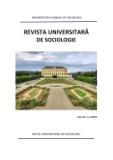SPATIAL AND TEMPORAL PATTERNS OF POLARIZATION AND POPULATION DECLINE IN ROMANIA’S DEMOGRAPHY: 1992-2018
SPATIAL AND TEMPORAL PATTERNS OF POLARIZATION AND POPULATION DECLINE IN ROMANIA’S DEMOGRAPHY: 1992-2018
Author(s): Georgian GutoiuSubject(s): Political economy, Demography and human biology, Economic development, Transformation Period (1990 - 2010), Present Times (2010 - today), Migration Studies
Published by: Ediktura Beladi
Keywords: Romania; spatial demography polarization; population decline; global capitalism;
Summary/Abstract: After 1990, Romania experienced an important demographic decline. This transformation developed within the economic context of global capitalism. The present paper argues that this economic context causes significant spatial demographic disparities as the demographic decline does not occur uniformly across the country because of the economic polarization through which some areas concentrate more wealth than others. The spatial demographic differences are explored from a longitudinal perspective for the 1992-2018 period at the geographic level of 41 counties and the capital of Bucharest. Three important demographic phenomena are discussed: depopulation, internal migration and aging. The spatio-temporal evolution of these three is analyzed in correlation with the spatial economic polarization. Results indicate that the spatial economic polarization influences across time the spatial inequalities developed in the evolution of depopulation, internal migration and aging in Romania. Bucharest and other richer counties such as Cluj, Iași and Timiș show lower rates of depopulation or even display some growth, higher numbers of internal migrants and lower rates of aging.
Journal: Revista Universitară de Sociologie
- Issue Year: XV/2019
- Issue No: 2
- Page Range: 41-58
- Page Count: 18
- Language: English

